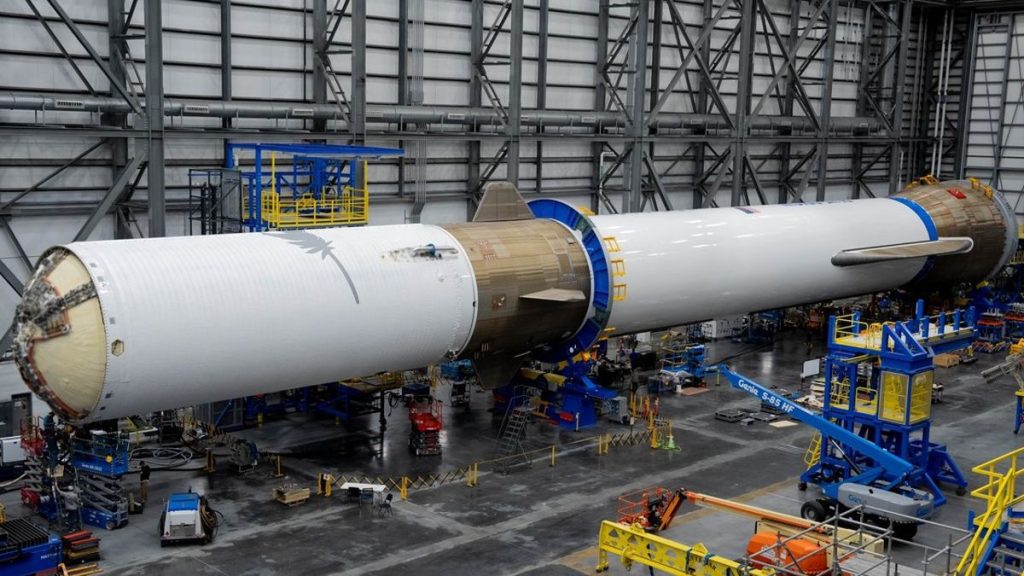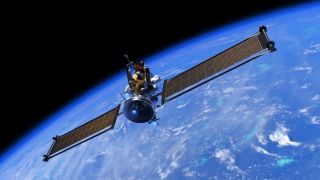Blue Origin assembles massive New Glenn rocket in preparation for its first launch (photo)

Blue Origin stacks huge New Glenn rocket ahead of 1st launch (photo) (Image Credit: Space.com)
Blue Origin’s massive new rocket is getting closer to being ready to fly.
The company shared a new photo of the two stages of its New Glenn rocket being joined together for the first time in the company’s facility near NASA’s Kennedy Space Center (KSC) in Florida. “GS-1 meets GS-2,” the company wrote on X (formerly Twitter) in a post accompanying the photo, in reference to the first (GS-1) and second (GS-2) stages of the new rocket.
New Glenn is expected to make its maiden flight sometime in November, taking off from Launch Complex 36 at Cape Canaveral Space Force Station, which is next door to KSC. The flight will carry one of the company’s new Blue Ring spacecraft on a National Security Space Launch certification flight known as DarkSky-1 and sponsored by the Defense Innovation Unit.
New Glenn features a reusable first-stage booster. The new rocket stands 270 feet (82 meters) tall in its two-stage version and 313 feet (95 m) tall in its three-stage version. SpaceX’s Falcon 9, by comparison, stands between 209 feet (63.7 m) and 230 feet (70 m) tall, depending on its payload.
Blue Ring is a spacecraft platform, meaning it can serve as a bus, or service module, for other spacecraft that can either be deployed into orbit or remain attached, as in the scheduled first flight. Blue Origin touts the vehicle’s maneuverability, writing in a company statement that Blue Ring has unprecedented capabilities “to easily maneuver through multiple orbits.”
Related: New Glenn: Blue Origin’s reusable rocket

The Blue Ring platform is being marketed to both commercial and government customers and has data storage and data processing capabilities.
The next step in Blue Origin’s testing and development of New Glenn will be a static hot fire test, in which the seven BE-4 engines on the rocket’s first stage are ignited for several seconds.
The rocket was scheduled to take off on its first mission in October 2024 to launch NASA’s twin ESCAPADE Mars probes, but the space agency decided to stand down from that launch to avoid potential cost overruns related to the rocket’s development.





